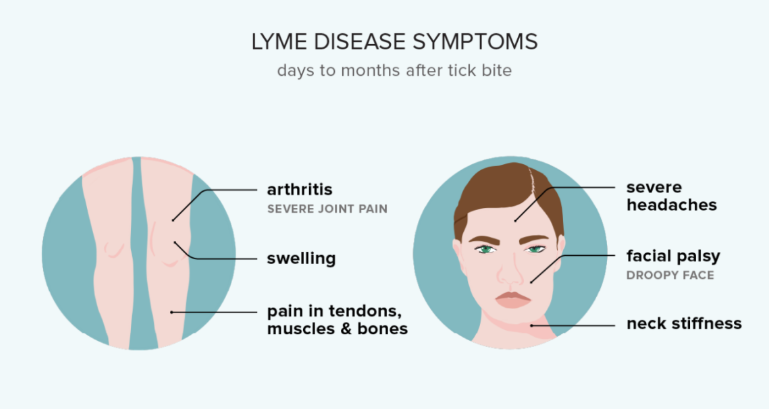How to Get Tested for Lyme Disease?


Lyme disease, caused by the Borrelia burgdorferi bacterium, is a growing concern for people who spend time in tick-infested areas. Treatments for Lyme disease are more effective when the disease is diagnosed early and tests are more accurate.
This blog covers the crucial details concerning Lyme disease testing options including ELISA, Western Blot, and PCR together with symptoms, accuracy of the tests, and the appropriate time for them. Understand how to go through the diagnostic stage for effective management of Lyme disease.
How to Get Tested for Lyme Disease?
Getting testing for Lyme disease includes medical history, symptom analysis, and lab tests like ELISA and Western Blot to confirm Borrelia burgdorferi.
If you need a Lyme disease test, the first step is to go to a doctor. He will carry out a proper assessment of your medical history and rashes including the bull’s eye rash that you might have. Routine initial blood tests such as ELISA are used to identify antibodies while additional tests such as western blot are used to confirm the results of the first test. In certain instances, PCR tests are necessary to identify bacterial DNA. If you suspect that you have been to an area with ticks and such bugs there, early and precise testing is very important to treat the disease on time.
When Should You Get Tested for Lyme Disease?
Testing for Lyme disease is crucial if you notice symptoms like a bull’s-eye rash, fever, or fatigue after a tick bite or exposure to tick-prone environments like wooded areas.
If you have been bitten by a tick and develop joint pain, a rash resembling erythema migrans (bull’s-eye rash), fatigue, you need to get tested for Lyme disease right away. If you get tested within the weeks of a tick bite, it allows for early detection and efficient management of the condition.
If you happen to reside in tick endemic areas or have traveled to those areas testing becomes even more important because there could be serious manifestations of Lyme disease including the cardiac and neurological symptoms.
How Accurate Are Lyme Disease Tests?
Lyme disease tests like ELISA and Western Blot have high specificity but may show false negatives if conducted early. Accuracy improves when combined with clinical evaluation and exposure history.
The test obtained for Lyme disease is determined by the method used for administering it. The most popular tests are ELISA and Western Blot, which are considered quite specific. However, they yield false negatives for people who are in the earlier stages of the disease, as it takes time for the specific antibodies to be absent.
Another test called PCR is said to be much more accurate during chronic stages of the affliction as it identifies the DNA of the bacteria. Assessing the patient’s clinical evaluation alongside the test results and known exposure to ticks enhances the accuracy of the diagnosis and provision of Lyme disease treatment.

What Are the Early Symptoms That Prompt Lyme Testing?
Early symptoms like fever, fatigue, headaches, muscle pain, and a bull’s-eye rash indicate Lyme disease. Prompt testing is essential if you’ve recently been exposed to tick habitats.
You will be required to undertake a check up for Lyme disease if you experience symptoms including fatigue, fever, muscle pain, rashes, headache and swollen lymph nodes and erythema migrans rash (bull’s eye rash). These tend to emerge from 3 to 30 days after being bitten by a tick. If you have been in a tick infested area like forests or long grasses in time, it is of utmost importance that you get tested in time. This prevents tissue inflammation, severe arthritis, heart problems, and neurological issues due to late detection against those predisposing factors.
What Happens If Lyme Disease Is Left Untreated?
Untreated Lyme disease can lead to severe complications like arthritis, neurological issues, and heart problems. Early diagnosis and treatment are essential to avoid long-term health consequences.
If Lyme disease is left untreated, it can progress to serious health issues, including chronic joint inflammation (Lyme arthritis), neurological disorders such as meningitis or facial palsy, and cardiac problems like heart block. Symptoms may worsen over time, causing severe fatigue, cognitive impairment, and nerve damage.
Prompt medical intervention with antibiotics can prevent these complications, highlighting the importance of early detection and treatment to avoid potentially debilitating long-term effects.
Can You Have Lyme Disease Without a Bull’s-Eye Rash?

You can have Lyme disease without the bull’s-eye rash. Symptoms like fatigue, fever, and joint pain may occur, and laboratory tests are essential for proper diagnosis in such cases.
Even though bull’s-eye rash, also known as erythema migrans, is one of the most classic signs of Lyme disease, it might not be present in all patients. Fatigue, fever, muscle pain, and joint pain can be felt in the absence of the rash, as well. ELISA and Western Blot are crucial in sorely pinpointing accurate diagnosis. Systemic symptoms and ticks exposure history helps in diagnosis of Lyme with absence of rash.
How Does Lyme Disease Testing Work for Chronic Cases?
Chronic Lyme disease testing uses advanced methods like PCR to detect bacterial DNA. Persistent symptoms like joint pain or neurological issues often prompt these specialized diagnostic approaches.
Lyme disease is diagnosed through PCR, which is used in the testing of chronic Lyme disease and examines blood and tissue samples. And while these tests are not as common, it is recommended to be used in the case of a persistently infected individual. Advanced diagnostics are suggested in the event of protracted symptoms such as joint inflammation, memory dysfunction, and exhaustion. Testing history and external symptoms ensures safe treatment of Lyme.
Conclusion
Timely and accurate testing procedures for Lyme disease play a critical role in effective treatment and recovery. Being aware of the symptoms, Lyme testing, and the importance of early diagnosis can allow individuals to take preventive measures to shield themselves. Health care practitioners should be contacted and advanced testing techniques should be employed to avoid long-term effects of the disease as well as for accurate diagnosis of ameliorating or chronic symptoms. Lyme disease can be managed quite well with awareness above all.
